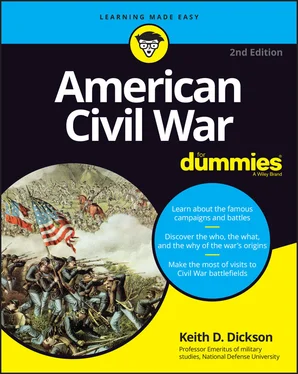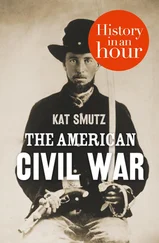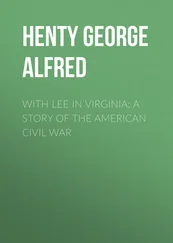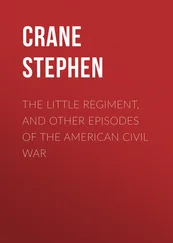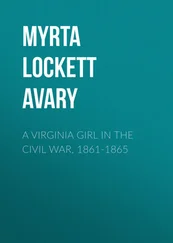Keith D. Dickson - American Civil War For Dummies
Здесь есть возможность читать онлайн «Keith D. Dickson - American Civil War For Dummies» — ознакомительный отрывок электронной книги совершенно бесплатно, а после прочтения отрывка купить полную версию. В некоторых случаях можно слушать аудио, скачать через торрент в формате fb2 и присутствует краткое содержание. Жанр: unrecognised, на английском языке. Описание произведения, (предисловие) а так же отзывы посетителей доступны на портале библиотеки ЛибКат.
- Название:American Civil War For Dummies
- Автор:
- Жанр:
- Год:неизвестен
- ISBN:нет данных
- Рейтинг книги:4 / 5. Голосов: 1
-
Избранное:Добавить в избранное
- Отзывы:
-
Ваша оценка:
- 80
- 1
- 2
- 3
- 4
- 5
American Civil War For Dummies: краткое содержание, описание и аннотация
Предлагаем к чтению аннотацию, описание, краткое содержание или предисловие (зависит от того, что написал сам автор книги «American Civil War For Dummies»). Если вы не нашли необходимую информацию о книге — напишите в комментариях, мы постараемся отыскать её.
American Civil War For Dummies,
American Civil War For Dummies
American Civil War For Dummies — читать онлайн ознакомительный отрывок
Ниже представлен текст книги, разбитый по страницам. Система сохранения места последней прочитанной страницы, позволяет с удобством читать онлайн бесплатно книгу «American Civil War For Dummies», без необходимости каждый раз заново искать на чём Вы остановились. Поставьте закладку, и сможете в любой момент перейти на страницу, на которой закончили чтение.
Интервал:
Закладка:
“John Brown’s body lies a’moulderin’ in the grave! But his soul goes marching on!”
Julia Ward Howe heard soldiers singing the song as they marched below her hotel window in Washington, D.C. Filled with inspiration by the massed voices, she immediately sat down and composed new, more strident, words to the tune she heard. That tune and her lyrics became more famous than the original as “The Battle Hymn of the Republic,” a song that still stirs a powerful sense of patriotism. Listen to the Mormon Tabernacle Choir sing it, and you’ll never forget it. The original tune for “John Brown’s Body” (again with new lyrics) has become the battle song of U.S. paratroopers, titled “Blood on the Risers.” Unfortunately, it is doubtful that you’ll ever hear the Mormon Tabernacle Choir sing that version.
The Fighting South, the Angry North
Following John Brown’s raid, the atmosphere became extremely tense. When people believe they are trapped and are threatened with destruction, they take the only option left — to fight. In 1859, many of the Southern states certainly viewed the situation in this way. The North’s opposition to slavery as an institution left the South with very few options. Southerners were defending constitutional guarantees, as they saw it, and those guarantees were worth fighting for.
The North also felt trapped by the debilitating effects slavery had on the nation. As long as the South maintained its hold on political and economic power, the nation would continue to stumble from one crisis to the next. The implied threat of the South using the Constitution and the Supreme Court to impose its repugnant system on the country angered and frightened many Northerners. Many believed the time was coming to resist such attempts at destroying freedom.
By 1859, without a broad national consensus and the ability to see beyond this growing sense of fear, the United States was spinning out of control. At one time, most Americans believed that sectional trouble could be blamed on radical agitators on both sides; this was no longer the case, however. Many Americans came to see some sort of armed clash between the North and South as inevitable, an “irrepressible conflict” in the words of William Seward, a Northern Republican.
The Election of Abraham Lincoln in 1860
Almost a year after Brown’s death, Americans voted in a presidential election. Abraham Lincoln, whose voice over the past three years had become the voice of the Republican Party, was nominated for president. Lincoln had made speeches in Ohio, Indiana, Illinois, Iowa, Wisconsin, Kansas, and New York, proclaiming as eloquently as anyone of his century that slavery was a moral wrong, “founded on both injustice and bad policy” as he put it. Quoting the Bible, the source of his most inspired speeches, Lincoln told his audiences that the country was “a house divided against itself.” “I believe,” he said, “this government cannot endure, permanently half slave and half free .” He dissected the Southern defense of slavery, exposing it in a way that the average man could understand.
Although the party had several stronger and more politically powerful candidates, Lincoln emerged as the compromise nominee at the Republican convention because he had the approval of both the very fractious right wing (former Whigs) and left wing (abolitionists) of the party. The Republicans adopted a strong sectional platform, supporting the Wilmot Proviso, internal improvements, a transcontinental railroad, and immigration. The astute reader will note that slavery is missing from this platform. High moral ideals often take a back seat when the political stakes (like the presidency) are so high. Even though clearly a sectional party, the Republicans hedged their bets a bit to try and capture votes outside the North.
A new party emerges
The Know-Nothings, who had changed their name to the American Party in the last presidential election, now became the Constitutional Union Party. Their strategy, true to form, centered on ignoring the slavery issue completely. Their platform was summarized in a slogan that couldn’t possibly insult anyone: “We are for Constitution and Union.” This party (such as it was), with its clever matching name and slogan, nominated John Bell of Tennessee, who had strong support from voters in Maryland and Kentucky.
The Democrats divide
After the Dred Scott decision, the Democrats could no longer maintain a North-South coalition. The party broke into two separate parties, each nominating a candidate advocating a sectional platform. The pro-North wing nominated Stephen Douglas, the author of the Kansas-Nebraska Act and the man who had defeated Lincoln in the 1858 Illinois Senate race. These Democrats vaguely supported both popular sovereignty and the Dred Scott decision. Because there was no clear-cut statement that supported congressional protection for slavery in the territories, several Southern states took action to force the issue. South Carolina, Alabama, Mississippi, Louisiana, and Georgia delegates established a pro-South wing of the party and nominated John C. Breckinridge of Kentucky, Buchanan’s vice president.
Lincoln wins by electoral vote
Thus the election of 1860 had four candidates, each appealing to the voters as the only true defender of the Union. The Democrats spent a great deal of effort attacking each other. The well-financed Republicans spent their money on large and enthusiastic demonstrations on behalf of their candidate. This left Lincoln to say very little at all, in spite of Southern Democrats decrying Lincoln as an enemy of the South. At this time, Lincoln might have been able to calm fears and explain his views, but he decided not to, thinking that the South would not believe anything he said. At any rate, the Republican strategists had written off the South and concentrated on the populous states in the Midwest where the electoral votes were concentrated. Of course, presidents are not elected by popular votes (individual votes cast by citizens), but electoral votes.
 Electoral votes are a number value assigned to each state based on its population. Whoever wins the greatest number of popular votes in a state wins those electoral votes; whoever wins the most electoral votes wins the election.
Electoral votes are a number value assigned to each state based on its population. Whoever wins the greatest number of popular votes in a state wins those electoral votes; whoever wins the most electoral votes wins the election.
The Republican strategy worked. Lincoln won every state in the North except New Jersey. Oregon and California joined to give the Republicans 180 electoral votes and the presidency. Breckinridge won most of the South with 72 electoral votes. Bell captured 39 electoral votes with Tennessee, Kentucky, and Virginia. Douglas took 12 electoral votes in two states, New Jersey and Missouri. Although the aggregate popular vote didn’t count, a breakdown of these votes is instructive. The three other candidates received 1 million more popular votes than Lincoln did. In the popular vote, interestingly, Lincoln received no votes at all in ten Southern states. In the rest of the South, he had a negligible tally. Another interesting fact emerges about Southern voting. The popular vote in the South was split between the three other candidates, indicating no agreement about the future of the nation, except to prevent Lincoln’s election.
One of the interesting quirks of democracy that fascinates and puzzles the nondemocratic world is the way that the voters whose candidate does not win accept the judgment of the majority, allowing the business of the nation to go on. In reality this unstated agreement is a very fragile condition, which forms the base of the democratic process. In November 1860, that base was shattered. For the first time in American history, the voters of the losing party refused to accept or abide by the results of an election.
Читать дальшеИнтервал:
Закладка:
Похожие книги на «American Civil War For Dummies»
Представляем Вашему вниманию похожие книги на «American Civil War For Dummies» списком для выбора. Мы отобрали схожую по названию и смыслу литературу в надежде предоставить читателям больше вариантов отыскать новые, интересные, ещё непрочитанные произведения.
Обсуждение, отзывы о книге «American Civil War For Dummies» и просто собственные мнения читателей. Оставьте ваши комментарии, напишите, что Вы думаете о произведении, его смысле или главных героях. Укажите что конкретно понравилось, а что нет, и почему Вы так считаете.
